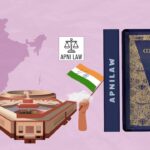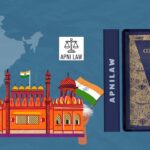Why Is the Prime Minister So Important in Indian Polity?
India’s Prime Minister holds the most powerful position in the country’s political and administrative system. The Prime Minister leads the government, directs national policies, and represents India on the global stage. The office combines constitutional authority, political leadership, and executive control. This makes the Prime Minister the central figure who drives governance and national decision-making. The PM’s role affects every major area of administration, from domestic affairs to foreign policy and emergency powers. Understanding this position helps us understand how the Indian government actually functions.
What Is the Constitutional Position of the Prime Minister?
The Constitution gives the Prime Minister a unique and central role in running the Union Government. The Prime Minister heads the Council of Ministers. The President appoints ministers only on the Prime Minister’s advice. This makes the PM the real authority behind the structure of the executive. Under Article 74, the President must act on the advice of the Council of Ministers, and the Prime Minister leads this council. The PM also acts as the main link between the President and the Cabinet. All important decisions reach the President through the Prime Minister.
The Prime Minister chairs Cabinet meetings and guides discussions. The PM coordinates ministries, resolves disputes, and ensures that all ministers work in harmony. If the Prime Minister resigns or dies, the entire Council of Ministers automatically dissolves. This shows how central the PM is to the functioning of the Union Government.
How Does the Prime Minister Influence Legislation?
The Prime Minister usually comes from the majority party in the Lok Sabha. This makes the PM the Leader of the House and the main voice of the government in Parliament. The PM advises the President on when to call or end Parliament sessions. The PM can also recommend the dissolution of the Lok Sabha. This gives the Prime Minister significant authority over the legislative schedule.
The Prime Minister announces major government policies in Parliament and explains the government’s stand on key issues. The PM also ensures that government bills move smoothly through the House. Through leadership in Parliament, the Prime Minister shapes the legislative agenda and ensures political stability.
How Does the Prime Minister Control Ministerial Appointments?
The Prime Minister plays the lead role in selecting ministers. The President appoints ministers only on the PM’s recommendation. The Prime Minister decides which minister gets which portfolio. The PM can change portfolios anytime. If needed, the Prime Minister can ask a minister to resign. The PM can also advise the President to dismiss a minister.
Beyond the Council of Ministers, the Prime Minister influences key constitutional and administrative appointments. These include appointments of Governors, the Chief Election Commissioner, and heads of important constitutional bodies. The Prime Minister also plays an important role in the selection process for senior officials in the bureaucracy and judiciary. This allows the PM to shape both political and administrative leadership at the national level.
What Role Does the Prime Minister Play in National Leadership?
The Prime Minister leads the national government and sets India’s policy direction. The PM guides economic planning, national security decisions, and administrative reforms. The Prime Minister’s leadership determines the pace and style of national development. Through cabinet coordination and policy direction, the PM ensures efficient execution of government programs.
The Prime Minister communicates government policies to the public. The PM shapes national priorities and provides direction on challenges such as economic growth, employment, social welfare, and technology. The Prime Minister becomes the face of the government’s vision and national strategy.
How Does the Prime Minister Represent India Internationally?
On the global stage, the Prime Minister acts as India’s chief spokesperson. The PM represents India in international meetings, negotiates with world leaders, and builds diplomatic relations. The Prime Minister decides India’s foreign policy priorities and speaks for the nation in global forums.
The Prime Minister’s leadership plays a vital role in shaping India’s identity as a global power. Decisions on defence, trade agreements, regional cooperation, and international partnerships largely emerge from the Prime Minister’s office. This places the PM at the centre of India’s international affairs.
What Is the Prime Minister’s Role During Emergencies?
During national emergencies, the Prime Minister plays a key decision-making role. The PM advises the President on necessary actions. These include imposing a national emergency or taking steps related to national security. The Prime Minister coordinates security agencies, defence forces, and key ministries during crises. This leadership becomes essential for maintaining stability and protecting national interests.
Why Is the Prime Minister Considered the Real Executive?
Even though the President is the constitutional head of the state, the Prime Minister holds real executive power. The PM leads the Cabinet and controls executive decisions. All major administrative actions flow through the Prime Minister’s Office. The PM guides ministries, influences appointments, directs policy, and speaks for the government. Political authority, administrative control, and constitutional backing together make the PM the real engine of the Indian government.
How Does the Prime Minister Ensure Political Stability?
The Prime Minister maintains unity within the government by coordinating ministers and managing alliances. In coalition governments, the PM plays a vital role in balancing interests among parties. The Prime Minister also ensures smooth functioning of Parliament by negotiating with opposition leaders and managing parliamentary strategy. Strong leadership from the PM helps maintain stability and continuity in governance.
Why Is the Prime Minister Central to India’s Policy Direction?
The Prime Minister provides the vision for national development. Through policy decisions, reforms, and strategic initiatives, the PM shapes the future of the nation. The PM guides the government in areas such as economy, technology, defence, agriculture, and foreign policy. The Prime Minister drives reforms and sets long-term goals for the country. This makes the PM not just a political head but also a visionary leader.
Conclusion
The Prime Minister holds the most important position in India’s political and administrative system. The PM leads the government, controls the executive, shapes legislation, guides national policy, and represents India globally. The role combines constitutional authority and political leadership. The Prime Minister ensures stability, directs national progress, and influences India’s future.








